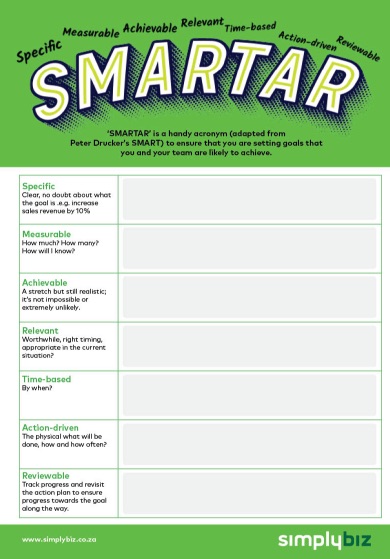
“Dreams don't work unless you do.”
John C. Maxwell
Simply put, a goal is something that you aim to achieve within a set amount of time. For most people, goals stay within the realm of wishful thinking and new year’s resolutions. This is mostly because we don’t approach goal-setting smartly.
There is an emotional (the desire) and a physical (the actioning) aspect to goal achievement that fundamentally separates “I want to lose weight” thinking from “I will lose 5kgs by the end of April, so I can wear my jeans again and feel good.” Spot the difference?
At the risk of revealing my age, I’m going to ask you to visualise what we used to call a ‘Kodak moment’. This is a moment that you either did capture in a photo or one that you wished you had. It may have been a wedding, the birth of a child, or an experience, such as bungee jumping. The reason you can recall the moment so vividly, with or without the aid of a photo, is the powerful emotion that is associated with it.
We are emotional beings and, as such, we are motivated by emotional triggers. The stronger the desire, the more likely we are to make something happen.
That’s all very well and touchy-feely, you may be thinking, but what has this got to do with small business?
Well, no business can afford to stand still. Your business goal may be to increase sales, expand to bigger premises, or pay off a loan quicker. The reality is that unless you and your team connect to this goal emotionally, it is unlikely to become a reality.
How do I get that emotional attachment to a business goal? – it’s pretty boring stuff.
Business goals do tend to be numbers-based, increased revenue, or higher sales targets, and numbers are not all that exciting…until we re-frame them into what the numbers mean. For example, an increase in sales of 10% will mean that we can invest in new technology, which will, in turn, improve our speed and allow the team to finish at least 15 minutes earlier every day. Those extra 15 minutes mean different things to different people. It may be getting home earlier to fetch kids and avoid paying extra fees at the creche or catching an earlier taxi, thus avoiding the long queues, or simply having time to garden. The 10% is meaningless, but time in my garden is meaningful.
What if the goal isn’t something that will directly benefit the team?
Not all goals may directly translate into a tangible benefit for the team like 15 minutes off, however, there is always an emotional component that you can tap into. For instance, your goal may be to receive fewer customer complaints – the emotional trigger is that there will be less stress and a happier work environment.
How do I make sure that the initial enthusiasm doesn’t die off?
We’ve all seen the gyms in January, full of well-intentioned people trying to live up to their new year's resolutions. They have the desire, but experience tells us that by April the gyms are empty again. This is because a dream is not a goal. The missing component is the physical action to make the goal achievable.
‘SMARTAR’ is a handy acronym I use (adapted from Peter Drucker’s SMART) to ensure that you are setting goals that you and your team are likely to achieve.
To make sure your goals are clear and reachable, they should be:
Specific - clear, no doubt about what the goal is. I will lose 5 kg / We will increase sales revenue by 10%.
Measurable - how much, how many, how will I know? E.g. I will weigh myself today and in 3 months. / Sales revenue this month is R65 000 per month, in three months it will be R71 500.
Achievable – this is a stretch but still realistic; it’s not impossible or extremely unlikely.
Relevant – worthwhile, right timing, appropriate in the current situation? 5 kg means I will fit into my jeans and feel good about myself / 10% improvement means we can reinvest, pay salaries, pay off the loan…
Time-based – there is a clear ‘by when’.
Action-driven – this is the physical how - what will you do differently? How will you lose 3kg? by eating 5 portions of vegetables daily, cutting out sugary drinks, exercising 3 x per week at the gym and ensuring that I reach 10 000 steps daily on my fitness tracker. / We will achieve a 10% improvement in sales revenue by each salesperson making an extra 5 sales calls a day and by asking our customers to refer and review, via our loyalty rewards programme.
Reviewable – monitor progress (daily/weekly/monthly) and revisit the action plan if progress is not on track. By writing out the individual steps, and then crossing each one off as you complete it, you'll see that you are making progress towards your goal which is intrinsically motivating. If you are not making sufficient progress, adjust the actions needed to improve your chances of reaching the goal along the way, rather than waiting until the target date to discover the progress or lack thereof.
|
|
 |
Treat your goals with the respect they deserve, and you just may achieve them!
Author: Janet Askew
 |
Janet Askew Janet is a trainer, coach, speaker and writer who is passionate about promoting women in business and SMME development. In addition to her consulting work, she is a director of Essentially Natural and serves on the board of the Wot-If? Trust. https://www.linkedin.com/in/janetaskew/
|

0 comments